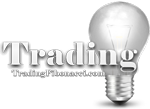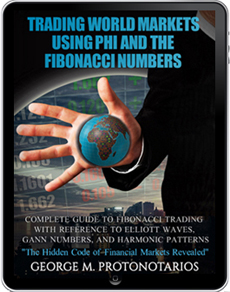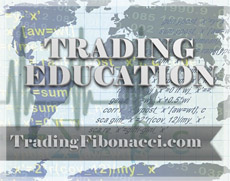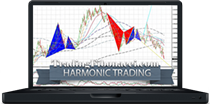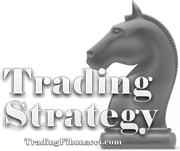Introduction to The Foreign Exchange Market
The Foreign Exchange Market (Forex) is a global, decentralized financial market where currencies are traded against one another. It is the largest financial market in the world, with daily trading volumes exceeding $5 trillion.
What is the Forex Market?
Forex, short for FOReign EXchange, is a global marketplace where currencies are traded in pairs (e.g., EUR/USD, USD/JPY). Unlike centralized exchanges, the Forex market operates without a specific physical location or central hub, functioning much like the internet. Forex transactions are executed via an Electronic Network of Banks (ECN), either through phone or the internet.
Currencies in the Forex market are traded in pairs and are classified as Majors, Minors, or Exotic pairs. The Forex market is known for its vast size and high liquidity, with a daily turnover estimated at more than $4 trillion.
Forex Market Participants
Participants in the Forex market include:
-
Banks (central, retail, and investment banks)
-
Retail and institutional investors
-
Day-trading speculators
-
International and national companies
-
Forex brokers (ECN, STP, and Dealing Desk brokers)
The Forex market functions similarly to the World Wide Web in that it is decentralized and accessible to anyone with a computer terminal and basic requirements. Trading is conducted electronically over-the-counter (OTC), meaning trades occur directly between buyers and sellers through computer networks. The market is open 24 hours a day, five days a week, with major trading centers in New York, London, Zurich, Tokyo, Frankfurt, Paris, Hong Kong, Sydney, and Singapore. As one market closes, another opens, ensuring continuous trading around the globe.
Forex Trading Hours (EST)
-
Australia Session: 5 p.m. – 1 a.m.
-
Tokyo Session: 7 p.m. – 3 a.m.
-
Hong Kong / Singapore Session: 9 p.m. – 5 a.m.
-
Frankfurt Session: 2 a.m. – 10 a.m.
-
London Session: 3 a.m. – 11 a.m.
The Forex market includes trading sessions that operate simultaneously at certain times of the day; this is known as a Forex session overlap.
Forex Sessions Overlap
a) London and New York sessions overlap from 8 a.m. to 12 a.m. (EST time)
b) Tokyo and Sydney sessions overlap from 7 p.m. to 2 a.m.
c) Tokyo and London and Tokyo sessions from 3 a.m. to 4 a.m.
The Majors, Minors, and Exotic Currencies
In a currency pair (e.g., EUR/USD), the first currency is called the base or primary currency (EUR), while the second is the quote currency (USD). Forex currencies are categorized into majors, minors, and exotic currencies. Major currencies are highly popular and are typically traded with narrow spreads.
1) Major Currencies
- USD (US Dollar)
- EUR (European Euro)
- GBP (UK Pound Sterling)
- JPY (Japanese Yen)
- CHF (Swiss Franc)
The US Dollar accounts for approximately 85% of the total daily Forex market turnover. The Euro is involved in about 37%, the Japanese Yen in around 17%, and the Pound Sterling in roughly 15% of daily turnover. The Swiss Franc represents about 7% of total Forex trading turnover.
2) Minor Currencies
Minor currencies are primarily the currencies of countries that are rich in natural resources such as gold, oil, and other commodities.
- AUD (Australian Dollar)
- CAD (Canadian Dollar)
- NZD (New Zealand Dollar)
- SEK (Swedish Krona)
- NOK (Norwegian Krone)
- DKK (Danish Krone)
The Australian Dollar, also known as the Aussie, accounts for approximately 6.5% of the total daily Forex market turnover. The Canadian Dollar represents about 4.2%, while the New Zealand Dollar, commonly referred to as the Kiwi, makes up around 2% of the daily Forex market turnover.
3) The Exotic Currencies
- HKD (Hong Kong Dollar)
- SGD (Singapore Dollar)
- RUB (Russian Federation Ruble)
- MXN (Mexican Peso)
- ZAR (South African Rand)
- KRW (South Korean Won)
- INR (Indian Rupee)
The Spot, Forwards, and Futures Markets
There are three main ways an institutional or retail investor can participate in the Forex market and exchange currencies. Forex trading most commonly takes place in the spot market. Futures and forward contracts are primarily used for hedging against unfavorable market risks.
For example, a Mercedes importer based in Japan may hedge against a potential appreciation of the Euro by purchasing a forward contract on the Euro against the Japanese Yen. Futures contracts are traded on organized financial exchanges, while forward contracts are traded over-the-counter (OTC). Typically, banks offer forward contracts to large international companies.
» The CBE Options & Futures Exchange
In the United States, the futures market is regulated by the National Futures Association (NFA). » NFA Futures
Breaking Down Volume Activity
The highest daily market activity occurs in the UK (36%), followed by the U.S. (17%) and Japan (6%). The Forex market operates 24 hours a day, five days a week, from Monday through Friday.
Chart: Forex Market Activity

The Forex Spot Market
The Forex Spot Market was introduced in 1971. The Forex Spot, or Cash Market, refers to trading at the current price. Payments for imports and exports of goods and services are made through the foreign exchange market. This segment of the market is known as the consumer Forex market. The Forex market includes many participants, such as central banks, commercial banks, investment companies, brokers, commercial firms, institutional investors, and retail investors.
-
Introduced: 1971
-
Definition: The spot (or cash) market refers to currency transactions conducted at current market prices.
-
Use Case: Payments for imports and exports—this segment is often called the consumer Forex market.
-
Participants: Central banks, commercial banks, investment firms, brokers, corporations, institutional investors, and retail traders.
The Retail Forex Market
The interbank retail Forex market for small speculators began in 1994. Later, in 1999, FXCM started breaking down large interbank units into smaller ones, giving rise to the retail Forex market as we know it today. For the first time, individual small traders had the opportunity to trade in the foreign exchange market.
-
Origins:
-
Began in 1994 for small speculators in the interbank market.
-
In 1999, FXCM revolutionized access by breaking large interbank orders into smaller units, enabling retail traders to participate.
-
-
Impact: Opened the Forex market to individuals for the first time.
History of the Foreign Exchange Market
This is a brief history of the foreign exchange market.
The Bretton Woods Accord in 1944
The establishment of the Bretton Woods Accord in 1944 is generally regarded as the beginning of the Forex market. It was created to stabilize the global economy after World War II. The Accord introduced the concept of pegging currencies to one another and led to the creation of the International Monetary Fund (IMF). Currencies worldwide were pegged to the US dollar, which was in turn pegged to gold, in an effort to bring stability to global economic events. The Bretton Woods system ended in 1971 but succeeded in stabilizing major economies during its existence.
Free-Floating Currencies after 1971
In late 1971 and 1972, two more attempts were made to establish free-floating currencies against the US dollar: the Smithsonian Agreement and the European Joint Float. The Smithsonian Agreement modified the Bretton Woods system by allowing greater currency fluctuations, while the European Joint Float aimed to reduce European currencies’ dependence on the US dollar. After these agreements failed, nations were permitted—and in 1978 mandated by the IMF—to allow their currencies to float freely. This free-floating system continued for several years, although many weaker currencies struggled against stronger ones.
The European Monetary System in 1978
European currencies were among the most affected by the strength of major currencies like the US dollar and the British pound. In July 1978, the European Monetary System was created to reduce dependence on the US dollar. By 1993, it became clear that this attempt had failed. Shortly after, retail currency trading opportunities began to emerge, allowing not only seasoned Forex market participants but also small investors to take on similar risks as banks and large financial institutions.
The Impact of Devaluation in 1997
By the late 1990s, financial instability increased in Europe, alongside major crises in Asia. In 1997, a severe currency crisis struck Southeast Asia, forcing many countries’ currencies to float. Currency devaluations continued to trouble Asian markets, undermining confidence in trading the open Asian Forex markets. Meanwhile, currencies that remained relatively strong stayed stable, preserving the concept of trading in economically robust nations.
The Introduction of the Euro in 1999
Although Europeans were already comfortable with Forex trading, the market was still unfamiliar to much of the rest of the world. The creation of the European Union led to the introduction of the euro in 1999. The euro became the first single currency used as legal tender across member states in the European Union, and the first currency to rival the US dollar. It brought financial stability—something Europe had long sought.
■ The Foreign Exchange Market History
TradingFibonacci.com (c)
Sources:
-
TradingCenter.org
-
Wikipedia.org
-
Ten Keys to Successful Forex Trading {Jared Martinez}
▶️ FIND OUT MORE AT TRADINGFIBONACCI.COM




